Courtesy of Flame Con. Photo credit: Ben Beaury.
In its fourth year, the queer comics convention known as Flame Con relocated from Brooklyn to Times Square in Manhattan. It was a big move for the con, which debuted only a few years ago, in 2015. Since that time, Flame Con attendance has bloomed from 2,200 to over 7,000 people according to head of PR for GeeksOUT Michelle Rose Micor. When I spoke to Micor on the second day of Flame Con, she told me GeeksOUT would be reviewing how the con performed in the new space at the Sheraton Times Square. The following week she informed me that “the new space was a success, providing a larger exhibitor floor and a main stage for performances which were also new this year.”
No word yet on whether this means Flame Con will stay at the Sheraton for 2019, but it sounds possible. Flame Con will certainly need the extra space, which offered much more elbow room than its previous location at the Brooklyn Bridge Marriott. This year boasted over 300 exhibitors, and big name sponsors like Thomson Reuters and Kickstarter, the latter of which was backing the con for the first time since Flame Con came to life on their crowdfunding platform in 2014.
A slew of queer creators and allies were on board this year, including Amy Reeder, Kate Leth, Cecil Baldwin, Mariko Tamaki, Sina Grace, Irene Koh, Kris Anka, Magdalene Visaggio, Dan Parent, Molly Knox Ostertag, James Tynion IV, Kevin Wada, and, of course, long-time Flame Con supporter Phil Jimenez.
It was the first Flame Con for Noelle Stevenson, whose hotly anticipated She-Ra and the Princesses of Power is coming to Netflix in November. Stevenson boasted one of the longest signing lines on the opening day of the con. “This has been an amazing con, everyone has been so positive,” The Lumberjanes creator told us. “They kinda cleaned me out,” she said, gesturing at her table, which had been picked clean by the end of the con on Sunday. “There’s been a huge amount of people [at Flame Con] but it still has that great small con feeling, where everyone feels like they know each other already.”
Diversity of content is inherent for a con whose existence addresses queer erasure
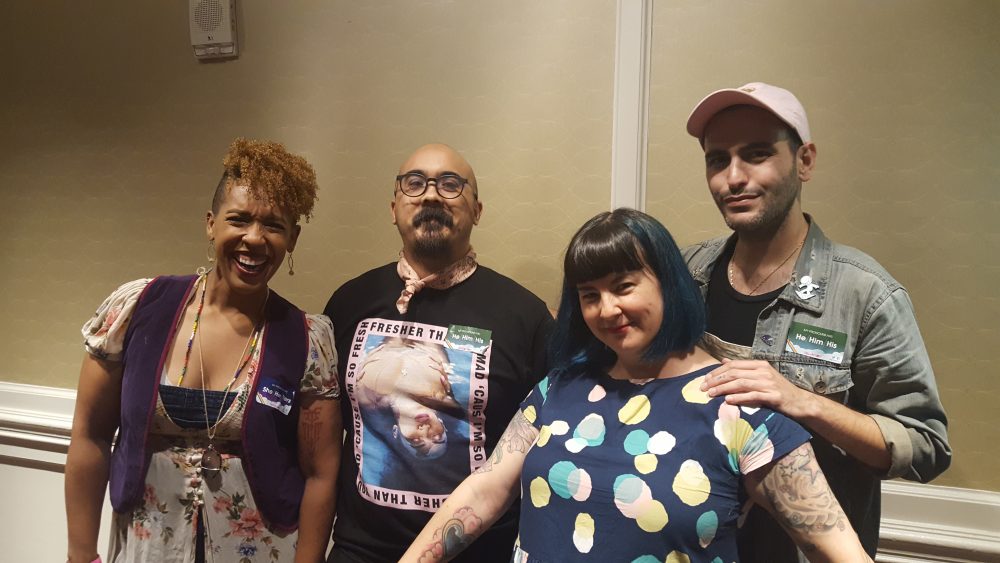
But what is a comic convention without panels? In this respect, Flame Con 2018 offered much to absorb. Saturday boasted an all-star panel of comic artists and writers with Squad Goals: The Here and Now and Future of Diversity in Comics, hosted by Angélique Roché, who also hosts the Marvel’s Voices podcast. Roché opened with a question about how to achieve authenticity when approaching diversity in comics.
Sina Grace explained that for him, “the devil’s in the details. That’s where authenticity comes from.” He suggested that it either “comes from your own experience” or “doing mad research.”
Mariko Tamaki noted that people were “afraid of getting called out for misrepresentation.” She suggests trying to form an “absolute picture of talking” to your characters. She appeared to have little patience for creators that didn’t engage in this kind of introspection, emphasizing that these types of questions have even been asked of her by “an 8-year-old” aspiring comic writer.
As for misrepresentation, Tamaki said: “If the only thing that’s true about your Asian characters is that they’re smart, then that’s a problem. But if that’s one thing that’s true about your characters, that’s okay because we’re super smart,” she joked.
Kris Anka explained that when he decided to take on Runways, he related to the characters immediately, saying they were largely a bunch of brown, queer kids from LA. “Oh my God,” Anka recalled thinking at the time, “I’m a brown queer kid from LA…I know these kids, I know Victor, I know Karolina…maybe not Chase but I’ll figure him out.”
Grace acknowledged Anka’s work on Runaways, which he thought clearly articulated how Anka “loves those characters. That comes from a lot of different places, but you are representing them and their ideas as complete, whole human beings.”
Tamaki remarked that it’s easy to spot that kind of caring in an artist’s work. “I’m the biggest John Hughes fan,” she said, “but you can tell there’s characters he cares about and characters he doesn’t.” She mentioned Long Duk Dong from Sixteen Candles as an example of this, a character who is often at near the top of the list of Hollywood’s worst Asian stereotypes.
Roché asserted that “diversity is multi-layered and complex,” and asked “what does that look like in the industry itself?”
Grace replied that in addition to looking at the different types of powers offered by any character, he also considered which characters will create tension during interpersonal narrative arcs. He recalled comic writer and editor Ann Nocenti describing Daredevil as “a lapsed catholic, who dresses as a devil. A vigilante, who upholds the law,” and added his own take: “there’s all this tension in one character. You don’t have to scratch your brain to tell stories about them.”
“The next diversity panel should be a bunch of publishers explaining why diversity isn’t important,” Tamaki quipped in response. “If you want to eat grilled cheese your whole life, that’s fine, but there’s more out there than just cheese and bread.”
“Everyone should be allowed to be the hero,” said Grace. “I grew up in a two-bedroom apartment. I could get out of my apartment without being caught, so I couldn’t be Spider-Man or Buffy.” Because there wasn’t a space for someone like him to exist in those stories, Grace said he “assumed I don’t deserve it,” adding that it intrinsically makes those left out “feel like they can’t have the power.”
Anka described a conversation with his creative team about the setting for Runaways. “We’re doing a school in East Hollywood, most of them [the students] have to be Mexican. The token should be the white kid in the back whose name is Brian and no one talks to him. To make that world correct you have to think about an East LA high school. Background characters are important, it makes everything feel authentic.”
“People forget even the environment is a voice,” said Roché, before asking: “does it make a difference having your perspectives at the table?”
“Yes,” said Grace. “Even explaining to someone in a kind, courteous way, that when you give a queer character a narrative failure it matters because we don’t have millions of stories where we save the day,” said Grace. If you do that to a gay character, he noted, “you just squashed a flame.”
Anka put it more bluntly: “maybe don’t make the bisexual character morally ambiguous. Maybe don’t make the Black person the villain.”
“It’s not fun to be the person at the table whose side-job is to explain why something is offensive,” remarked Tamaki. “It’s this weird extra job. When I started writing Tomb Raider, I was like ‘well here’s a white person going to other countries and stealing artifacts.’”
Grace noted that while he appreciated the queer character of Kevin in the television show Riverdale, he had noticed that “Kevin is still on the margins…still there to be the body, to be sexted or attacked or protected.”
Tamaki explained that she did get a lot of feedback on her run on She-Hulk of the “this comic sucks because she’s sad all the time” variety. The writer countered, “she’s gonna be sad for six issues and that’s just the story. If you’re talking about intersectionality, mental health is important. They pitched to me writing a really sad She-Hulk comic and I said: ‘I can do that!’” Tamaki also suggested fans listen to Nine Inch Nails’ The Downward Spiral while reading those issues, saying that was her soundtrack for the story: “it goes perfect.”
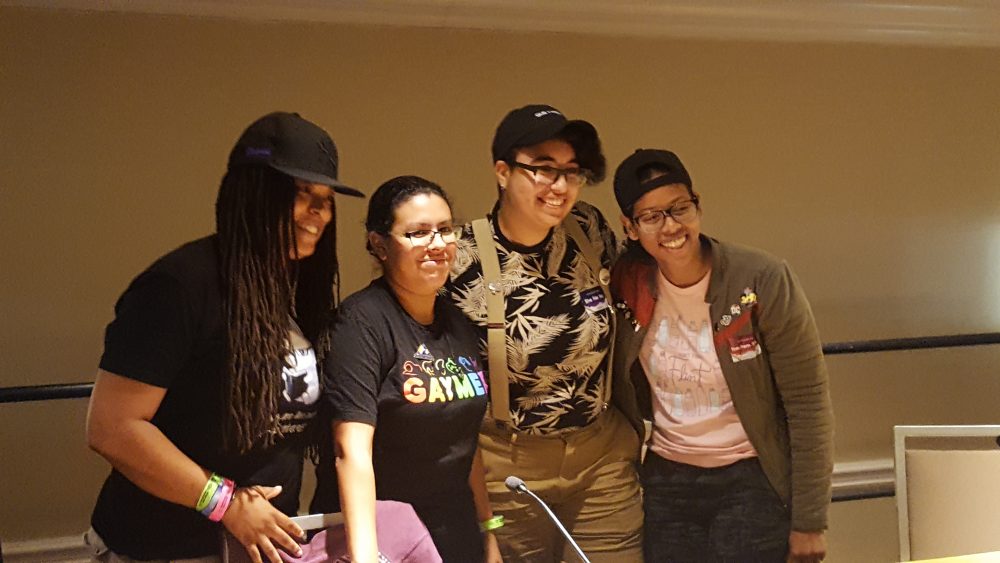
At the Invisible Latinx; Flame Con Remix panel on Sunday, there was also a lot of discussion around tokenism and Latinx representation. Reign, who writes for Latinx Geeks, moderated the panel, which included her collaborator Alexis Sanchez, founder of Latinx Geeks. Sanchez pointed out the lack of complex Latinx identities found in most token racial representations. “You can only be biracial if you’re half-white in the media,” she said. “But I know seven people who are Puerto Rican and Bolivian.”
Panelist and comic writer Vita Ayala explained that “even the language [of Latinx culture] itself is not supportive of someone who lives outside the binary. I’m not binary, my pronouns are neutral…but even the furniture has a gender. It took me an hour to explain ‘they.’” Though Ayala stated their mother was incredibly supportive of them as a queer person, sometimes fighting against cultural stereotypes of gender was like “fistfighting with God.” Ayala took issue with much of the diversity attempted in rebooted franchises like Voltron. “They try to make them diverse…one in each flavor.”
Short story and fiction writer Barbara Perez Marquez agreed, saying: “one of each [basic race types] and we’re good, right? It’s becomes a very diluted version. Even your Cubanisms you have to distill. We have to include everybody.”
Sanchez herself felt that the Voltron reboot used the Cuban character of Lance as “the joke character.”
“There’s not enough,” she said. “You have one, and it’s token, and it’s a nightmare. So they don’t bother…we already know that we are completely different cultures within cultures. We know that being Latinx and queer are totally different.” Sanchez called upon the audience to make their own work as the solution to this problem, work that represented their own unique experiences, or to work as consultants for existing work.
Diversity of creators also extended to those who cover comics
A Queer Folks Write About Comics panel, hosted by Mallory Yu of NPR’s All Things Considered, became something of a workshop on the challenges of writing about comics in general, especially Indie comics.
Yu asked the panel of comic journalists and writers how they navigated their personal relationships to artists when deciding what to cover. “The Venn diagram of overlap between someone who writes about comics and comics creators is almost a circle,” said Yu, especially for the queer comics community.
CK Stewart, who writes for Newsarama, said “this is something I think about a lot…if you’re my friend, my perspective is…there’s no way for me to feel comfortable wanting to cover your work because if I don’t like your work I don’t want to tell you.” Stewart took “hard line” on this type of coverage, claiming the integrity of the writing could be questioned, especially for positive coverage. “Anything that comes to me, I’ll pass on to the team. That’s the best I can do.”
Mey Rude, who has written for Autostraddle, disagreed. “When I become friends with creators part of it is I’m drawn to them as creators.” Explaining that she distanced herself from doing formal journalism as a way to deal with the ethical implications, she stressed the need to cover people who are queer creators, queer creators of color, and trans creators, even if they are friends, for increased visibility.
Kat Overland, small press editor for Women Write About Comics, discussed how access to materials is another problem for comics writing, especially for volunteer sites like hers. “I won’t hear about small press stuff if the small press, the one person that’s creating these books, doesn’t know to mail me. When I go to cons it’s great, that’s where I find a lot of creators.”
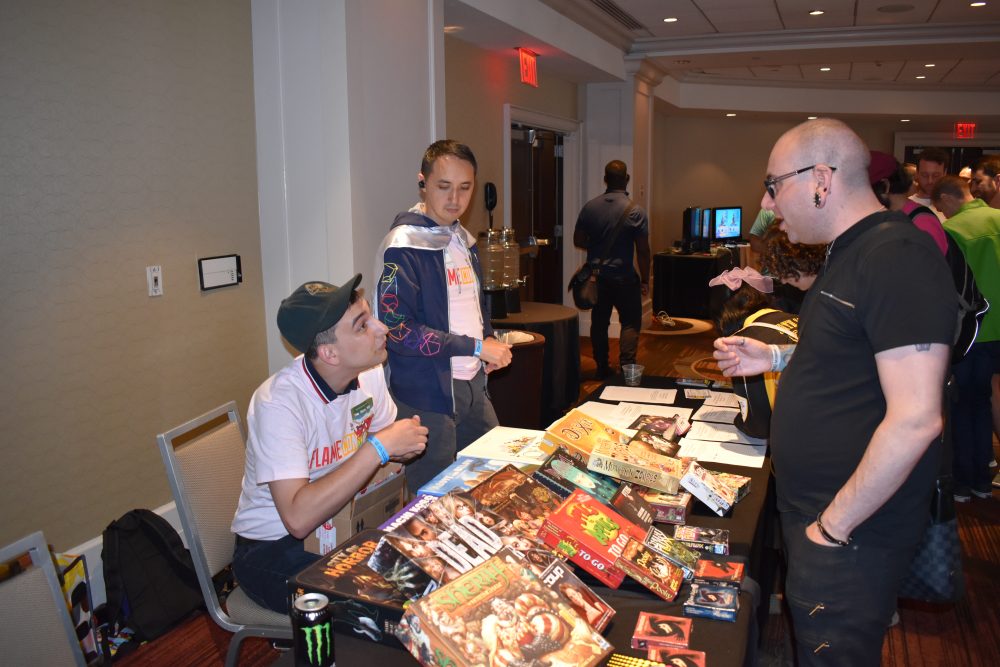
Queer creators naturally gravitate toward independent publishers
The niche-qualities of Flame Con also lead indie publishers and platforms to utilize it for outreach to queer artists and writers. Kickstarter’s director of publishing and comics Margot Atwell was at both days of Flame Con this year. Smiling from behind the Kickstarter table, the first the company has had as a part of the con, she talked about how Kickstarter was reaching out to comic creators specifically. She handed me a small booklet they produced, with “How to Kickstart a Comics Project: A Zine by Kickstarter” written in large friendly letters on its cover.
She told me Kickstarter “wanted to engage with creators directly, and give back to a community that has been really welcoming to us and used the Kickstarter platform in really interesting and innovative ways.”
After brainstorming with GeeksOUT, the company sponsored taking professional photo portraits of comic creators for free during Flame Con. Atwell said that while Kickstarter doesn’t normally exhibit at shows because the publishing team employs only a few people, “other members of the outreach team from different creative disciplines and other LGBTQ+ folks and allies stepped up in a big way” this year, “to help us create a fun presence in a community we love.”
Camilla Zhang, comics outreach lead for Kickstarter told us “about 640,000 people have backed a Comics project,” on Kickstarter. “The success rate of Comics projects since Kickstarter’s launch is 56%, compared with 36% for Kickstarter as a whole. The Comics success rate has been creeping up over time and is at 70% so far this year.” Zhang noted that while that rate is “small in comparison to other categories on the platform, the Kickstarter comics community is extremely healthy with a very high repeat backer rate.”
Zhang expressed that she felt Kickstarter’s “whole being” was designed “to give underprivileged creative communities the access, resources, and visibility that are usually denied to them by not only mainstream culture, but also institutionalized socio-political and economic barriers. With so many marginalized creators under the same roof, Flame Con’s energy makes queer creators feel powerful and seen.”
Atwell noted that “1283 comics projects were successfully funded last year on Kickstarter, which is more than the number of floppies Marvel put out last year.”
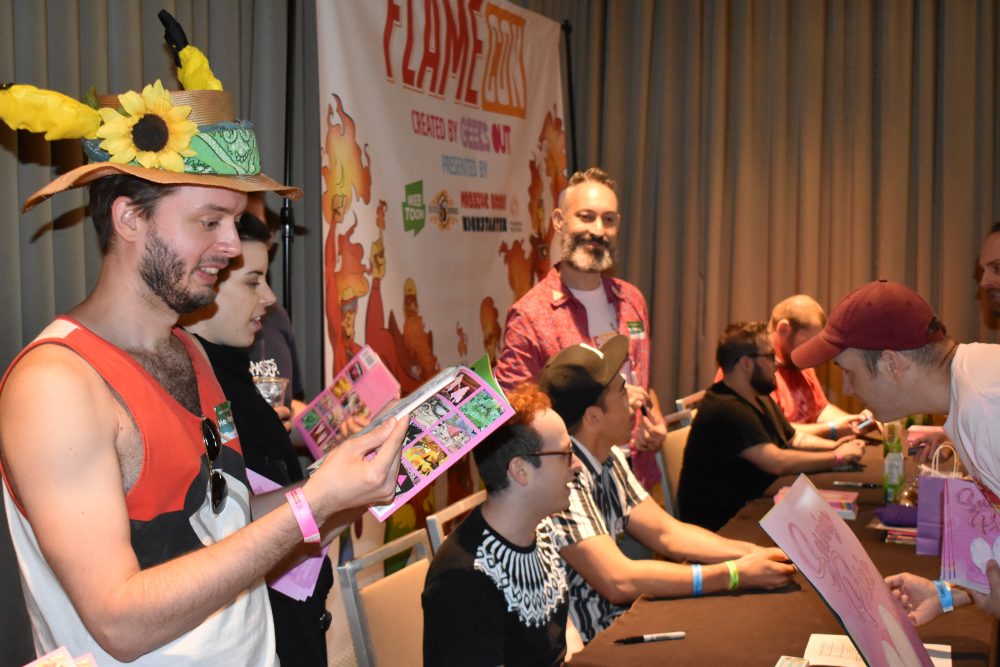
Another platform looking to give queer creators a method to publish their work independently is Hiveworks, who had a table near the back of the exhibition floor, covered by creator-owned books of all sizes, shapes, and colors. COO and lead editor Isabelle Melançon spoke to us about this online publishing studio for creator-owned artists. “What that translates to in plain English is that we support people who do webcomics by offering services, but also by offering to do print books.”
Melançon told us that Hiveworks has two sides. One side is a site they’re currently trying to develop, that’s closer to what a traditional publisher would offer: fully produced print books that the organization owns a part of. The other side, which she says is currently their larger side, “is where we offer diverse services to help support creators, which include ads, merch, editorial, and also being their connection to third party publishers and services.” Hiveworks has a partnership with French publisher Hachette, for example.
Melançon describes the company as “extremely unique.” Founder Joseph Stillwell, who employees call “Jojo,” began Hiveworks in 2011 as a hosting service to “help out his friends at the time” who were making webcomics. Soon he became interested in offering more services to creators, and started recruiting a small staff. Unlike traditional publishers or hosting platforms, Hiveworks merges these services to offer an experience specifically tailored to the process of turning webcomics into creator-owned merchandise and printed volumes.
Incredibly, Hiveworks has no investors. They are entirely funded through revenue generated by ad sales on the comics they host, as well as merchandise and print publishing. “It’s a different system,” said Melançon. “I feel like it’s the kind of system that had to be developed to allow web comics to grow into something more standardized.”
Hiveworks has sponsored Flame Con for two years. Melançon said they decided to back the con because “most of the staff at Hiveworks and the great majority of our creators are queer people. So it only made sense that we would support the birth and growth of a con that would focus on queer artists.”
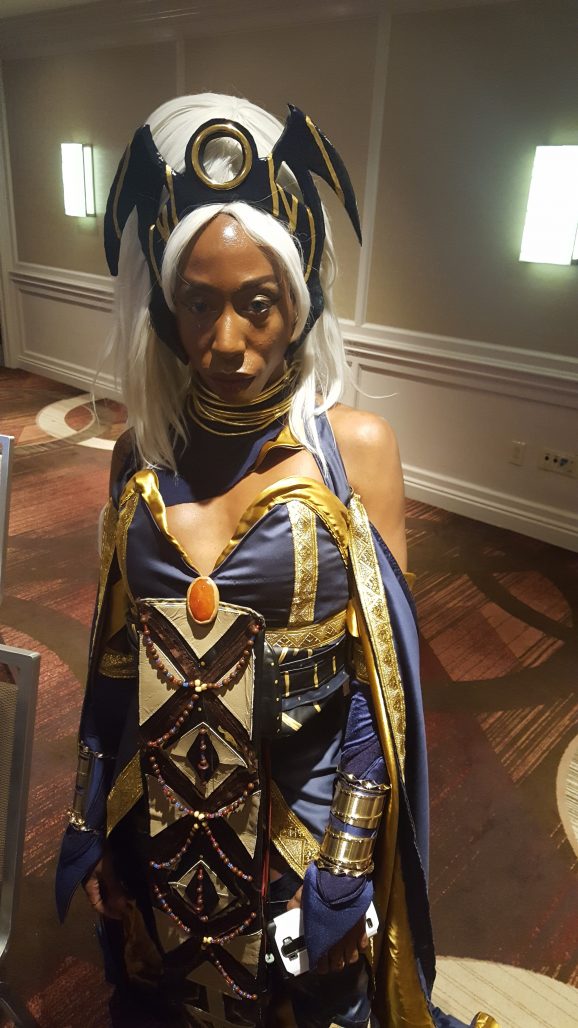
What’s a queer nerd convention without some comic-themed performances?
Speaking of queer artists, the programming offerings at Flame Con are also somewhat unique among the various culture and comic conventions. 2018 saw a musical theater track added to programming, in addition to the comedy and podcasting events held previously. Kevin Gilligan, board member for GeeksOUT has worked on programming since last year, moving into the role of Head of Experiences for Flame Con 2018.
It was a natural fit for Gilligan, who has a performance and comedy background himself, and who scored a major guest in 2017: Robin Lord Taylor (Oswald Cobblepot from Gotham). “We did a special panel that year with Vincent Rodriguez III from Crazy Ex-Girlfriend and Mark Patton who was from Nightmare on Elm Street 2. He was like the first ‘scream king’ and they had a discussion about being out in Hollywood.”
This year, Gilligan highlighted the work of the improv group Thank You For Coming Out, which centered this year’s performance on Phil Jimenez, who he described as “one of our first and biggest fans.” Gilligan told us that Jimenez shared his coming out story. “Then they performed improv and musical improv is off of his story. For the performance stage we wanted to highlight voices that aren’t typically heard.”
Last year the performance stage was located just outside of the exhibition hall, so visitors had to walk through it to get to the vendor and artist tables. This reduced its ability to really be “a place for people to sort of take a break from the con floor,” which Gilligan says has always been the intention. “It was sometimes more of a thoroughfare than a destination,” he said.
In 2018, the stage was on a separate floor from the exhibitors, which enhanced it’s oasis-like qualities. The somewhat removed location didn’t seem to affect the audience turnout. A performance on Sunday of Browncoats: The Musical, for instance, saw every seat filled. A slot that had every reason to be empty, noon on Sunday morning, was far from it — a performance of Queer Nerd Poetics was well attended. The works were received with enthusiasm: cheers, snaps, and murmurs of acknowledgement from the crowd peppered the performances.
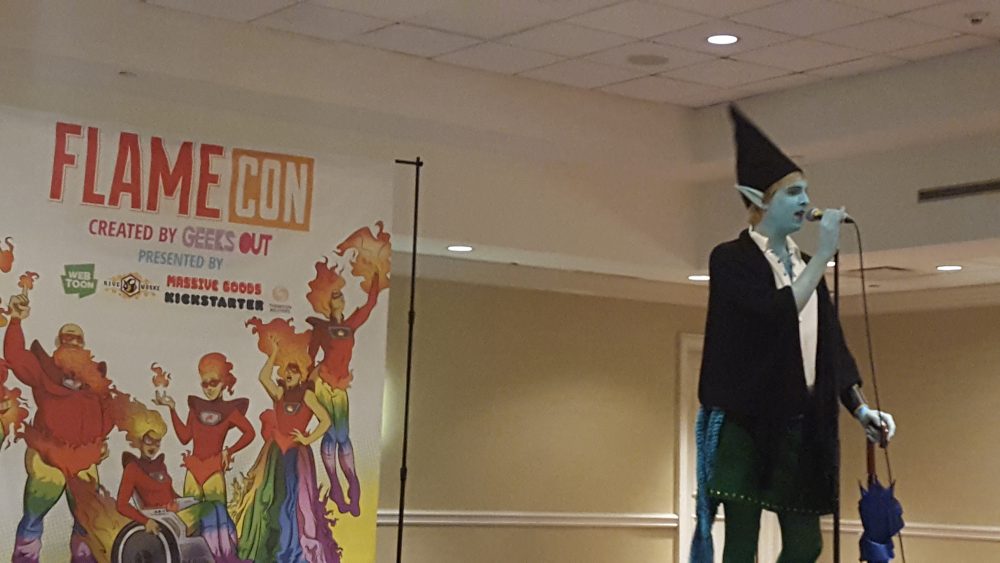
Brooklyn poet Liv Mammone presented a poem from “the point of view of Wednesday Addams coming out to Morticia as Asexual” that was funny, beautiful, and insightful. Omar Holmon, co-founder of Black Nerd Problems, shared “10 Things I Want to Say to a Black Nerd” which included the line: “Batman’s superpower is white privilege,” which wasn’t one of the 10 things, he added, “but just needed to be said.” The audience cheered their agreement.
Host Brendan Gillett closed with a set that featured a poem which tied into his cosplay. Gillett was dressed as Taako, who he described as a “Gay elf wizard” from the podcast series Adventure Zone, also a graphic novel from First Second Books. He describes an afternoon reading the comic in the park, which passerby refer to as being for “nerd LARPing homosexual fornicators.” Gillett proudly applies both of the aforementioned labels to his own identity. All the poets who performed wove their fandoms into their self-examination this way, and it was unexpectedly moving.
Each year, Flame Con increasingly becomes more than just “the largest the largest LGBTQ comic convention in the world,” as they’ve billed themselves in press material. It is ever-evolving and expanding: clearly striving for greater intersections of race, gender, and sexual orientation among its programming, sponsorship, and featured guests.
“I think that art has a way of healing,” said Gilligan, “that’s very important right now. And it’s a way for us to celebrate these things that make that make us different. To put our heart and our joy out there, and to share with other people.” He hoped that the performances at Flame Con allowed “people to connect on a different level, that they can take with them and bring out to the rest of the convention floor and the rest of the world.”
Stevenson put it simply: “we have this thing in common where everyone here is queer or queer-friendly, or has a family member who is queer, and it’s so great to be with all these people in a room together who are celebrating themselves.”
Note: The Beat works with Hiveworks on advertising for our site. This was not, however, something the author knew of when deciding to conduct thst interview.


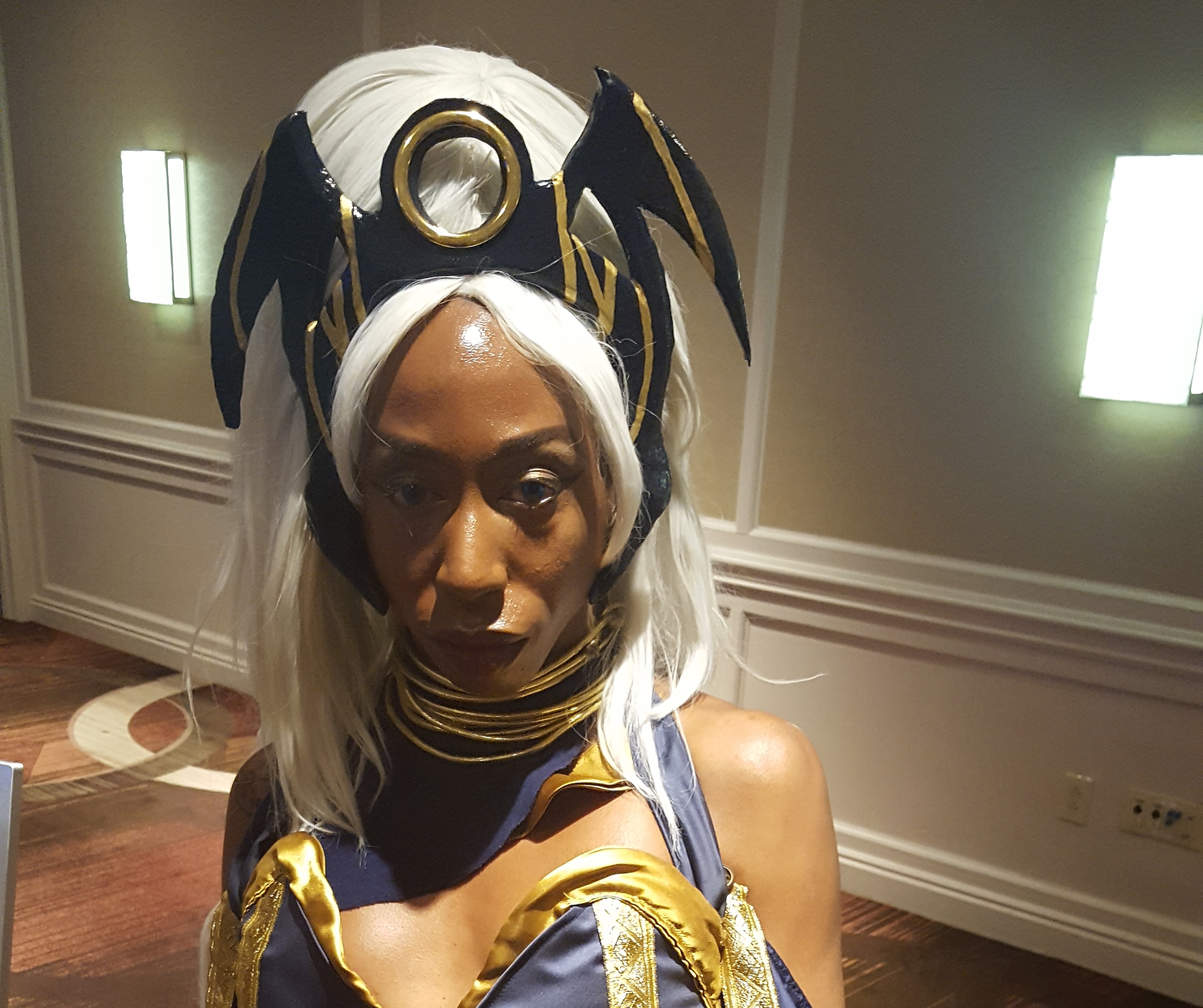
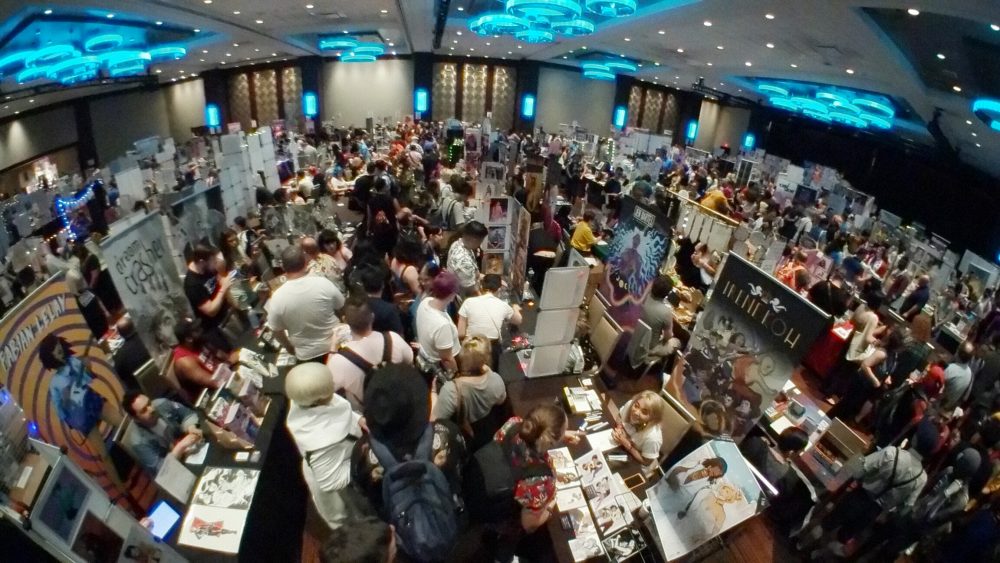
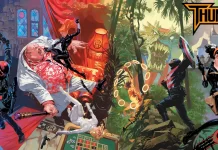

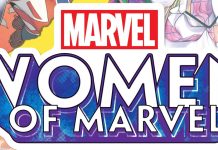



Cool creators, and space.
Is it seriously that slow of a news cycle that you’re still posting articles about an event that ended on August 19?
Love it! Thanks for the recap and thanks to all the creators and reporters and fans for making this event happen!
Comments are closed.